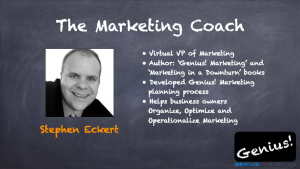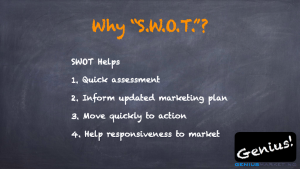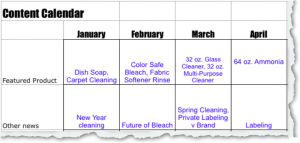Build A Brand, Don’t Create
 I often see or hear marketers write or talk about ‘creating a brand’. I prefer ‘building a brand’. Just semantics? Not really…
I often see or hear marketers write or talk about ‘creating a brand’. I prefer ‘building a brand’. Just semantics? Not really…
What is a Brand?
The brand for most businesses is the essence of the company and how it delivers its goods and services. Those things that make the company unique. For smaller companies, the brand is largely who they are and how they do their work. The customer experiences the people in a small business (so hire well!). The people make the impression of who the company is and what the company is about… much more than any graphic representation of an idea.
For larger companies, they are often known by their brand elements: the graphic, the typeface, the shape of the bottle, the logo. They often spend more time thinking about how to build an organization to meet the lofty ideas set forth in the brand concept.
Creating a Brand
Too often, it’s like wishing on a star. It might happen this way: a bunch of cool graphics, a website and really sexy tagline are created. It’s attractive and people respond. Then customers run up against the real experience with the product or service or delivery method and the result is great marks for logo… but low marks for the experience. To use an old phrase, all sizzle, no steak.
Building a Brand
Requires taking stock of who we are and how we deliver our product or service, then developing the graphics and logo and message to reflect that real experience. The brand is in the experience and reflected in the graphics and creative. Not the other way around.
Not that we can’t be aspirational in our creative, but that must be backfilled with the foundational processes to deliver on the brand promise.
Integrated Building
Building the company and building the brand are one in the same… or at least interlocked efforts. You can’t just ‘create a brand’… cool or otherwise. Build the company and how it will operate and the brand will be a creative extension of the reality of the customer experience.
Need help with your brand building? Contact us.




 Reason 3: Reallocate Resources – Focus on New Opportunities
Reason 3: Reallocate Resources – Focus on New Opportunities Why Marketing SWOT?
Why Marketing SWOT? Our marketing consulting revolves around the content calendar (and other planning and marketing management tools). If you follow me on Twitter, read the Genius! Marketing blog regularly, or purchased the Genius! Marketing book, you know that starting with tactics is not advised. It’s easy to chase tactics. The way to start is with the message, based on the brand and marketing/sales goals. One of the most important tools we use to help companies plan and execute marketing successfully is the Content Calendar.
Our marketing consulting revolves around the content calendar (and other planning and marketing management tools). If you follow me on Twitter, read the Genius! Marketing blog regularly, or purchased the Genius! Marketing book, you know that starting with tactics is not advised. It’s easy to chase tactics. The way to start is with the message, based on the brand and marketing/sales goals. One of the most important tools we use to help companies plan and execute marketing successfully is the Content Calendar.